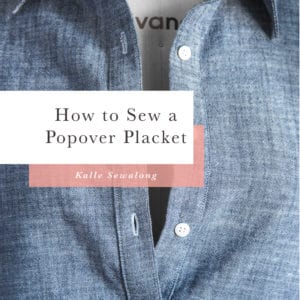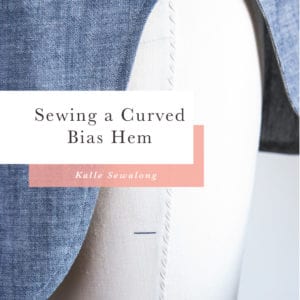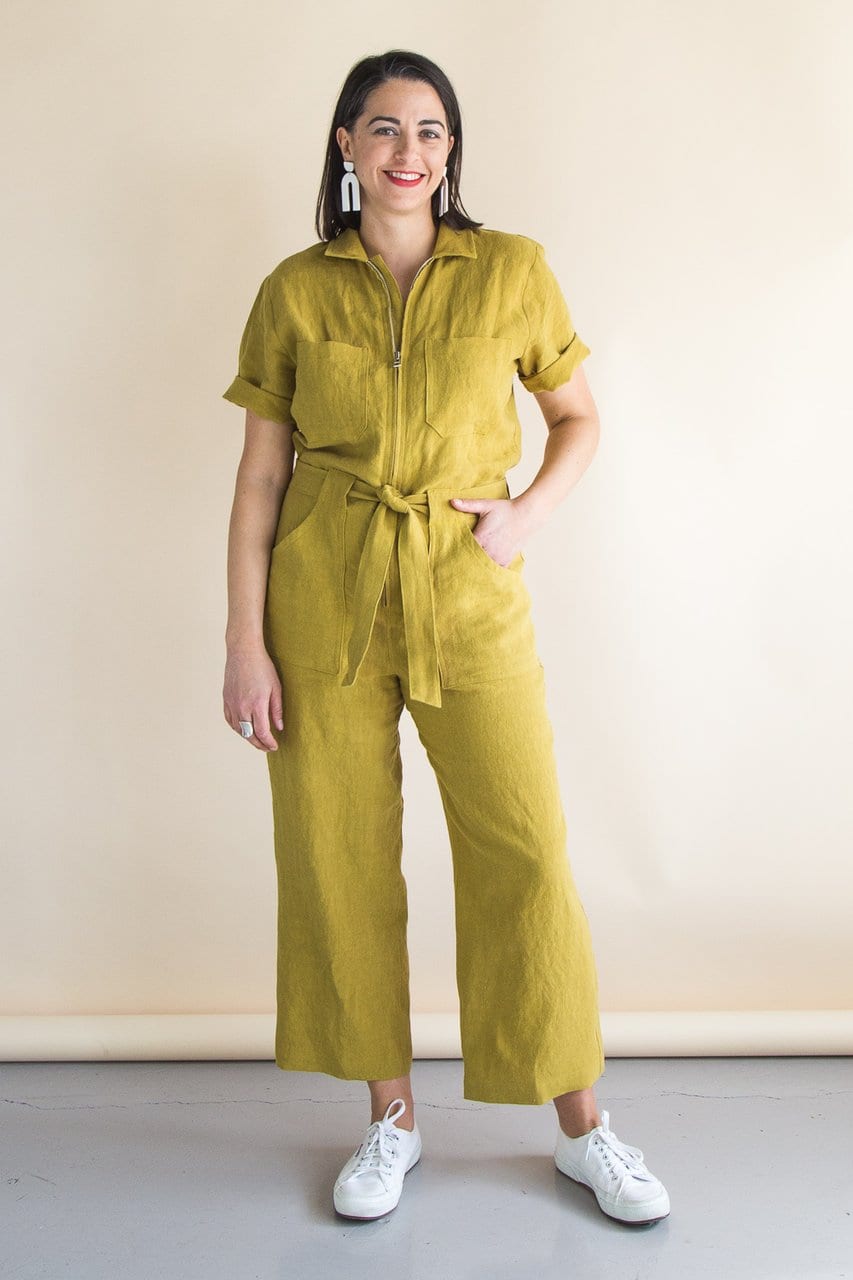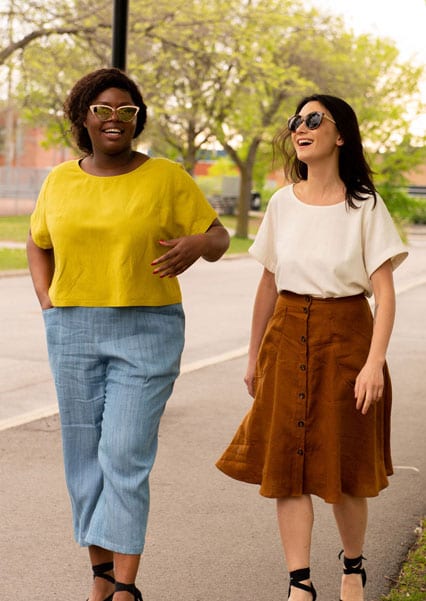I don’t know about you, but it’s never felt like a better time to sink into an involved, absorbing sewing project. I have definitely been turning to sewing as a coping strategy, and I’ve never been more grateful for the mental health benefits. Sewing keep my hands busy and my mind present and engaged; it’s like a creative pause button on all the news and anxiety surrounding us.
I finished this quilted jacket a few weeks before quarantine started, but it’s exactly the kind of project my brain and hands want right now. While the silhouette of this pattern is super basic (McCalls 7549, now out of print), I spent a lot of time constructing it and finding ways to make it extra special. It’s a good reminder that even the simplest designs can be elevated with thoughtful techniques.



This isn’t my first go at a quilted jacket – I tackled the Grainline Tamarack a few years ago. My Tamarack was fun to make but had a more casual vibe, and I wanted something a bit more polished, an alternative to a blazer or cardigan when I need a slightly fancy layer. I’ve had this pattern on my “one-day-must-make list” forever, and I like that it’s a simplified nod to a classic Chanel blazer: boxy, cropped, timeless.
One of my resolutions this year was to work more from my fabric stash. Our stash cabinet at the studio literally broke from all the weight of the fabric crammed in there, so I’ve been trying to chip away at the yardage we don’t have earmarked for samples. For this jacket, I used two pieces I’ve had hanging around, a silk/cotton blend with a zig zag weave, and a stretch cotton with a flocked velvet pattern. The pattern instructions were a bit bananas and directed you to completely quilt large sections before cutting out your pattern pieces, but I felt it would be a waste to quilt a yard of fabric only to leave most of it on the cutting floor. Since I quilted this to a thick bamboo batting, I also wanted to avoid bulk at all the seam allowances. Instead, I joined all the body and sleeve sections first and then made a quilt sandwich with my batting and a cotton lining.


The only downside to this method is that you have to be really careful when you’re switching quilting patterns at each section since all your backstitching is visible at the cross seams, so it helps that everything was black. I did a diagonal cross hatch on the main body, switching to horizontal lines on the bottom panel. I think it gives a lovely textural effect, especially with the material change; the black on black tonal look makes the jacket feel a bit more elevated than just using one fabric on the body.
The stretch cotton was a challenge to quilt – I think it had about 30% stretch across the cross grain. I considered stabilizing it with fusible interfacing to make it easier to quilt, but I was worried it would end up too stiff. Instead, I used a walking foot, and surprisingly the fabric didn’t distort or stretch too much as it was being machine quilted.


Once again I utilized couture techniques for this make. I made a muslin the couture way, and then used the muslin pieces to cut out the fabric. The only change I needed to make to the pattern was changing the pitch of the shoulder in the back since it wasn’t laying flat around my neck. I also hand basted all my layers together before quilting them, and I HIGHLY suggest doing the same anytime you’re piecing a quilted garment together. It just give you so much more control than machine basting, and ensures your layers don’t shift like they would at the machine. I’m a total convert to this Japanese basting thread and these needles – they make hand basting a joy rather than a chore.

This pattern calls for a traditional lining, but instead I quilted my lining to the batting. I don’t generally work with a lot of novelty prints, but I fell in love with this fabric. It has a smoother hand than most quilting cottons, and the dog print totally did me in. For a beautiful finish inside, I wrapped all the seams in silk crepe double fold bias tape (more stash busting – I had a yard of 45″ silk I wouldn’t have been able to squeeze a project out of). On the outside, I used the same bias tape but slip-stitched it in place on the inside of the jacket since I don’t want any visible stitching to show. It looks so elegant and pretty – in the past, I’ve resisted hand stitching bias in place because I thought it was too time-consuming, but as I embrace slow sewing, small touches like this make my garments feel so much more special.


I only got to wear this beauty a few times before quarantine found me at home in sweat pants more often than not, but I’m making a bigger effort to get properly dressed in the morning, even if the only people who see me are the few folks I cross paths with on my daily walks with Harry. Clothing has such a huge impact on our moods, and I don’t think I can face months of yoga pants and ratty t-shirts, so this jacket may see the light of day now that it’s warm enough to go out in a lighter layer.
Have you ever made a quilted jacket before? What slow sewing projects are you embracing right now?














